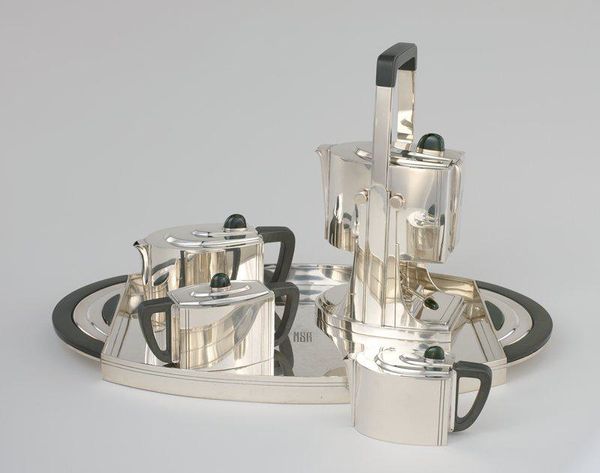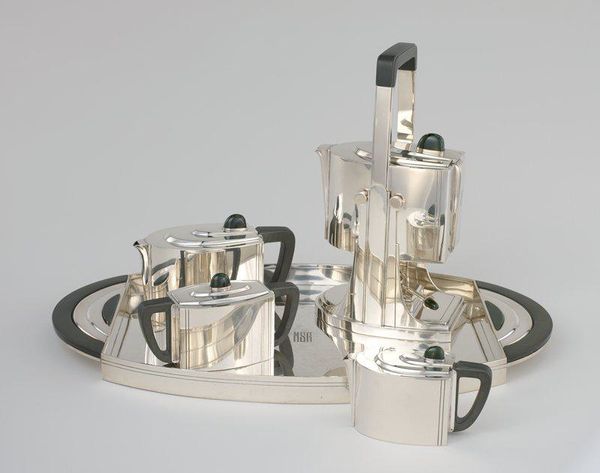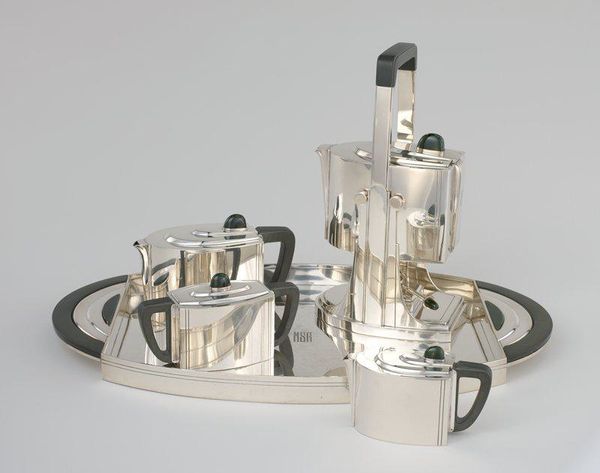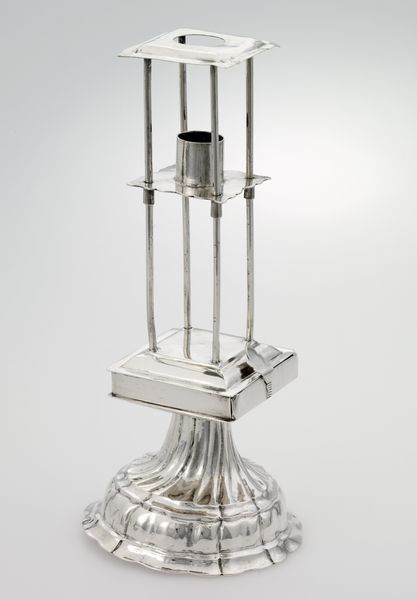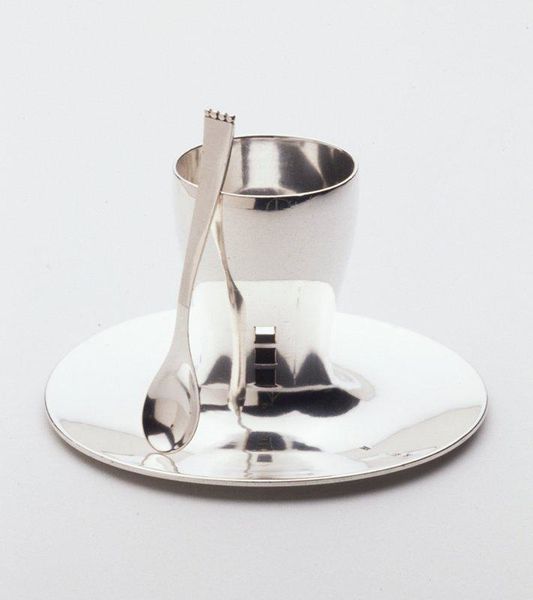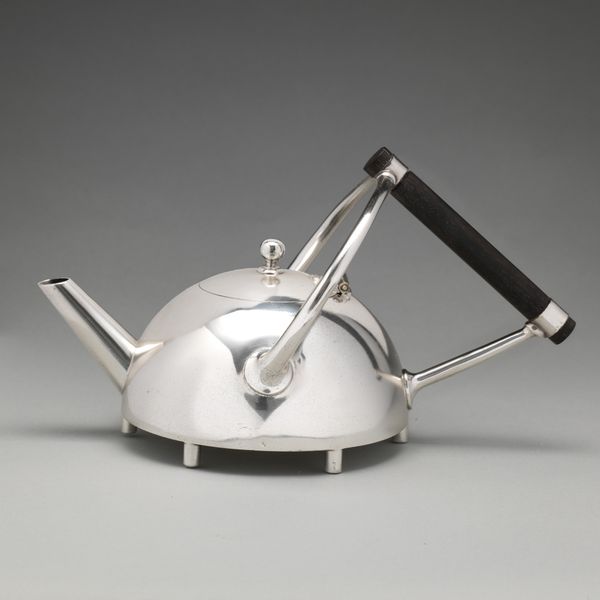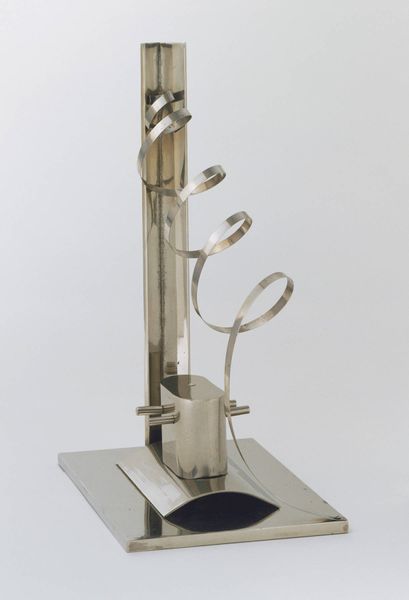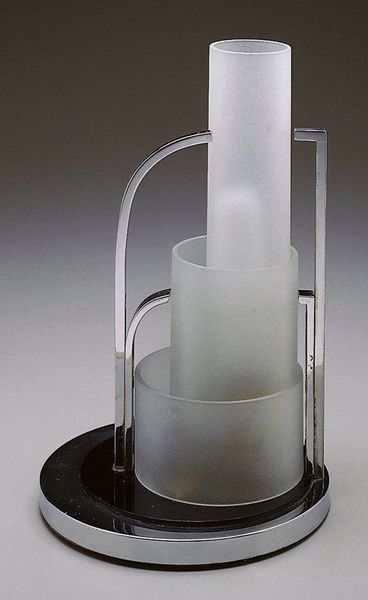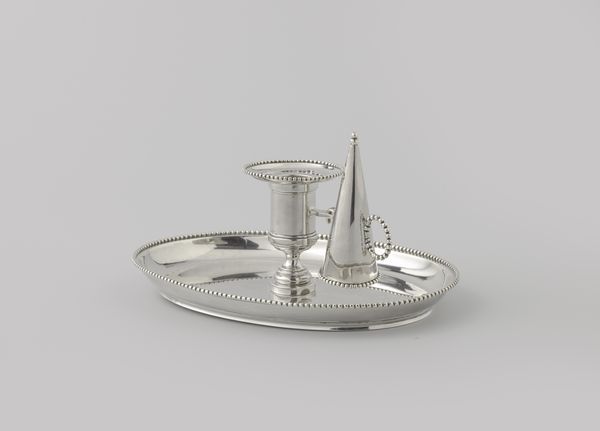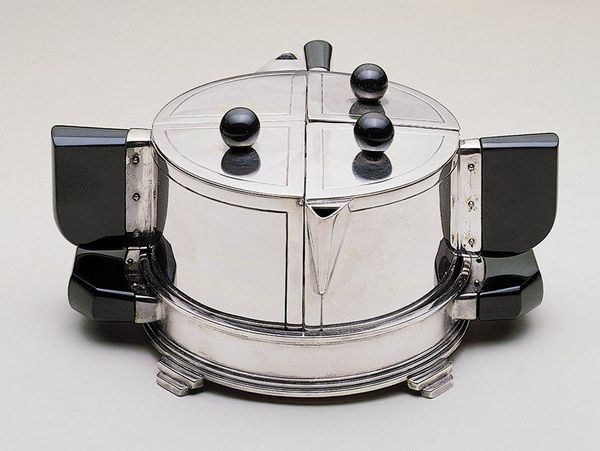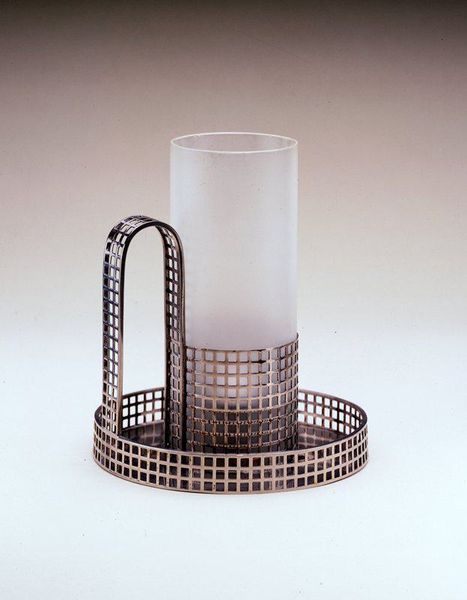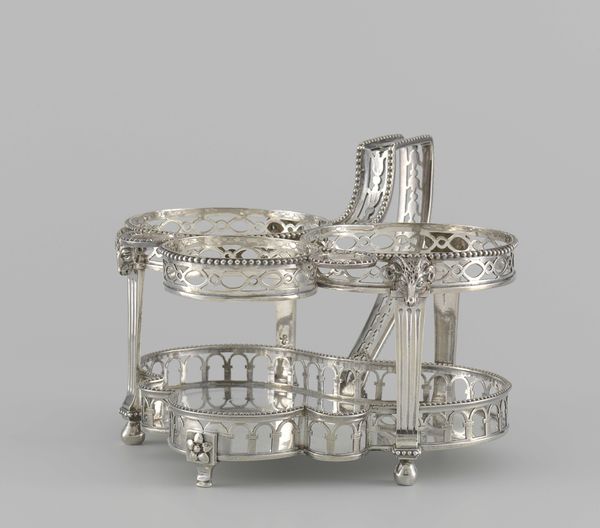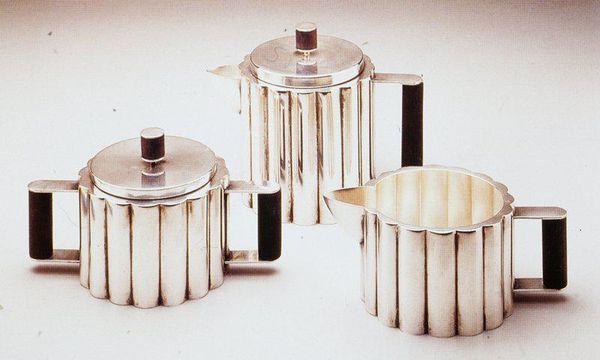
Coffee pot from -Tête à Tête- tea and coffee service 1939
0:00
0:00
silver, metal
#
art-deco
#
silver
#
metal
#
geometric
#
united-states
#
decorative-art
#
modernism
Dimensions: 24 1/2 x 14in. (62.2 x 35.6cm)
Copyright: No Known Copyright
Curator: I'm immediately struck by the confident geometry of this tea and coffee service. Attributed to Arthur Leroy Barney and crafted in 1939, it embodies the spirit of American Art Deco. Editor: The visual vocabulary certainly speaks to that era, yet there’s something about the rigid lines and gleaming silver that evokes a feeling of cold precision. Almost austere. Curator: Consider how the forms build on each other—the stacked volumes, the repetition of rectangular handles. It's a study in formal relationships, pure and elemental. Note how the streamlining softens into curves, as evident in the teapot’s handle or the tray's perimeter. Editor: True, but for me, the high polish of the silver conveys wealth and aspiration but it also speaks to the culture of modernity taking root at the time: celebrating speed, industrial innovation, and social stratification. Silver signifies both luxury and functional elegance. And the presence of coffee and tea suggests an emerging internationalism that shapes not just wealth but identity. Curator: That intersection of the functional and the ornamental is, I think, critical. Barney has taken what are essentially utilitarian objects and elevated them through careful attention to proportion and detail. It’s about a harmonious integration of purpose and visual delight. It really is an exciting tension. Editor: I would only suggest looking more closely at the specific relationship between ritual, status, and symbolism, rather than the more formal purpose versus visual dynamic. What would an analyst have to say about how tea or coffee become ritual tools for identity? The set makes a bold statement about status and refinement. Each angular handle is less ergonomic and more of a geometric claim, isn't it? Curator: An interesting perspective, looking at the claim being made by the forms rather than how they formally behave in relation to one another. I still feel strongly that analyzing the aesthetic success depends greatly on noticing how successfully those geometric statements communicate as forms. Editor: For sure. Either way, this glimpse into design elevates what we typically see, offering unique views on status and the forms we assign value to, and make status claims with.
Comments
No comments
Be the first to comment and join the conversation on the ultimate creative platform.
